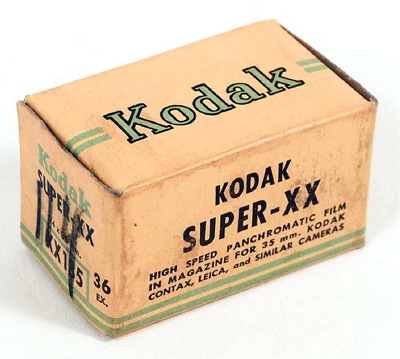 [Back in August of 2021 Patrick Peccatte introduced me, via email, to Philippe Villéger. Assiduous followers of this investigation will remember Peccatte, a specialist in photographs of Normandy, as the reader who, at his own his French-language blog Hypotheses, published a response to the Capa D-Day Project that sent it viral in France in summer 2015. Since that time he has tracked it carefully and updated French readers on our research periodically.
[Back in August of 2021 Patrick Peccatte introduced me, via email, to Philippe Villéger. Assiduous followers of this investigation will remember Peccatte, a specialist in photographs of Normandy, as the reader who, at his own his French-language blog Hypotheses, published a response to the Capa D-Day Project that sent it viral in France in summer 2015. Since that time he has tracked it carefully and updated French readers on our research periodically.
Villéger is a member of the informal collective devoted to annotating the historic WWII images of Normandy posted online at PhotosNormandie, another internet project to which Peccatte contributes. (For more about Peccatte, Villéger, and the PhotosNormandie project, see the details at the bottom of this post.)
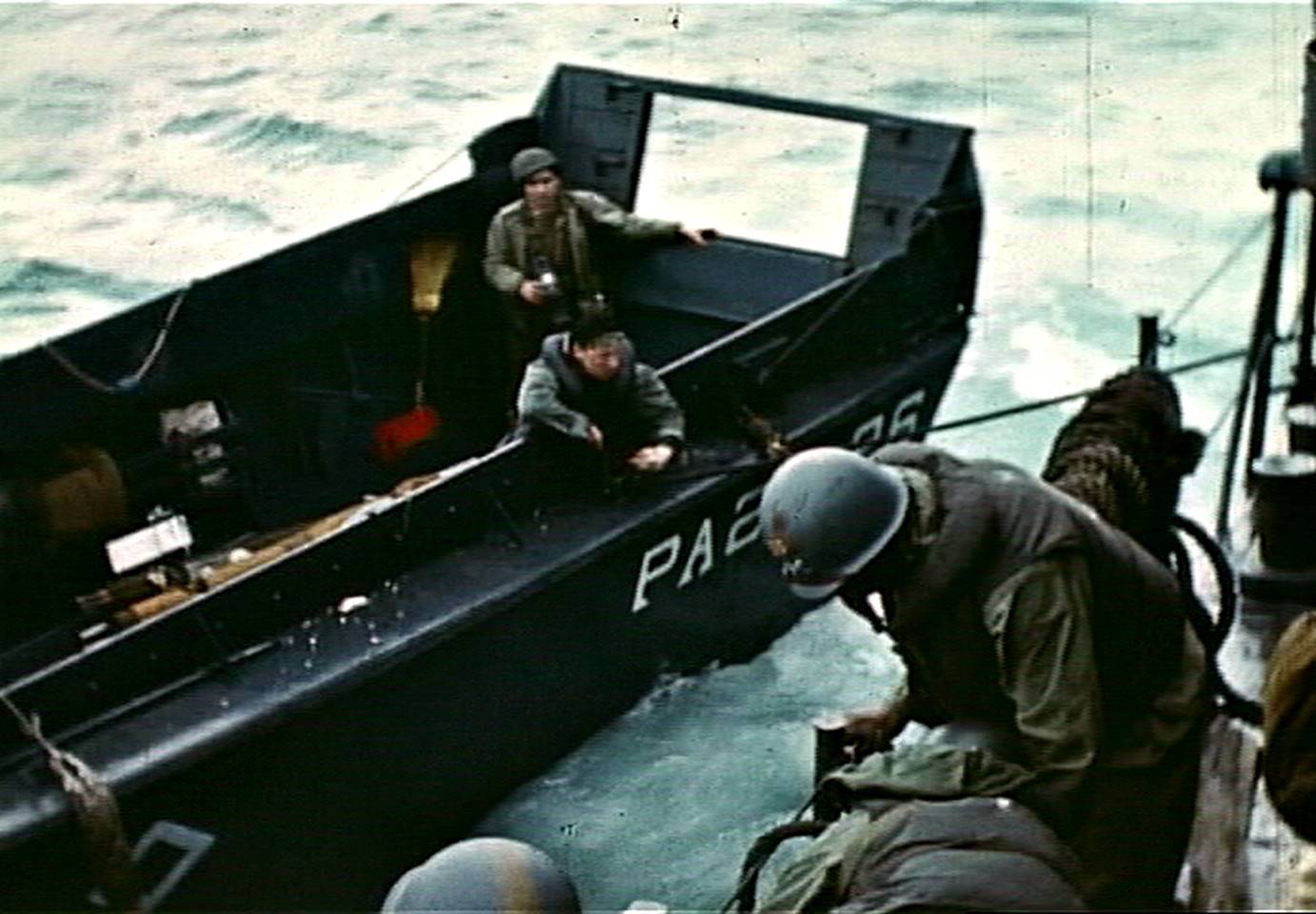
Robert Capa, center rear, aboard LCVP from USS Samuel Chase, photographing transfer of casualty, D-Day, frame from film by David T. Ruley
Having spent considerable time working his way through our investigation and considering the evidence we have accumulated, Villéger raised an intriguing possibility: Given the correlation that military historian Charles Herrick and I established between Capa’s Omaha Beach images and color film footage shot by U.S. Coast Guard cinematographer David T. Ruley from a different position and angle but at roughly the same time, could Ruley have actually recorded the arrival on the Easy Red sector of the very same Higgins boat that brought Capa in? And, if so, might Ruley have missed filming Capa stepping into the surf there by ending that clip just a few seconds too soon?
I found this a reasonable and indeed logical question, yet one that had not occurred to me. And of course we welcome research by others sparked by our own efforts. Villéger had begun to diagram what he saw as similarities between the figures in Capa’s images and those in the few seconds of Ruley’s clip that show troops disembarking from an LCVP at or near the same spot. So I encouraged him to continue his project, promising to publish it here whether or not it proved conclusive.
There ensued several months of email correspondence. In the end, Peccatte penned a distillation of Villéger’s arguments, while also taking into account evidence developed previously by Charles Herrick and myself. This has resulted in an article summarizing that hypothesis, presented in clear, accessible prose. Peccatte published this first, in French, at his blog on December 20, 2021. The English translation — achieved by me via the remarkable DeepL Translator and then lightly revised for clarity — will appear here in three installments. You’ll find Part 1 below; click here for Part 2, and here for Part 3. — A.D.C.]
•
Could Robert Capa have been filmed while photographing the Normandy landings?
by Patrick Peccatte
Within the framework of the PhotosNormandie project, a bold hypothesis was recently put forward: while he was taking his first photos of the Normandy landings, Robert Capa could have appeared on a film shot by a U.S. Army cinematographer, and missed doing so by just a few seconds. This hypothesis has been discussed over the past few months between its author, Philippe Villéger, a contributor to the PhotosNormandie project; photo critic and historian A. D. Coleman of the Alternate History: Robert Capa on D-Day project; and myself, co-creator of the PhotosNormandie project.
This article presents the essence of these discussions as simply as possible. Technical or logistical considerations on the landing are voluntarily limited, and the military jargon of the time is reduced to a minimum. However, it is hardly possible to avoid some of the usual denominations, summarized below:
The beach that was codenamed Omaha Beach is about 4-1/3 miles long. For the purposes of invasion planning it was divided from west to east into four sectors of different widths named Charlie, Dog, Easy, and Fox. The last three sectors were subdivided into sub-sectors identified by colored names: Green, White, Red, always from West to East.[1] Capa landed on the Easy Red sector, located in the commune of Colleville-sur-Mer. Part of the analysis consists in identifying the precise location of his arrival, since this sector is approximately 1 mile wide.
The types of landing craft engaged are designated by acronyms:
- LCVP (Landing Craft Vehicle & Personnel), a small troop and vehicle landing craft that could carry 36 soldiers, or about one section of a company;
- LCI(L) (Landing Craft Infantry (Large)), a large landing craft that could carry a company, or about 200 soldiers;
- LCM (Landing Craft Mechanized), a large landing craft designed to transport vehicles;
- LCT (Landing Craft Tank), a large landing craft designed to carry tanks.
•
Robert Capa’s first five photographs at Omaha Beach
Robert Capa landed on June 6, 1944 at Easy Red, where he took ten photographs. The frame numbers on each image in the film contact sheet range from 29 to 38. View 37, which is missing in the second to last position, is the famous photo “The Face in the Surf,” whose negative is now lost.
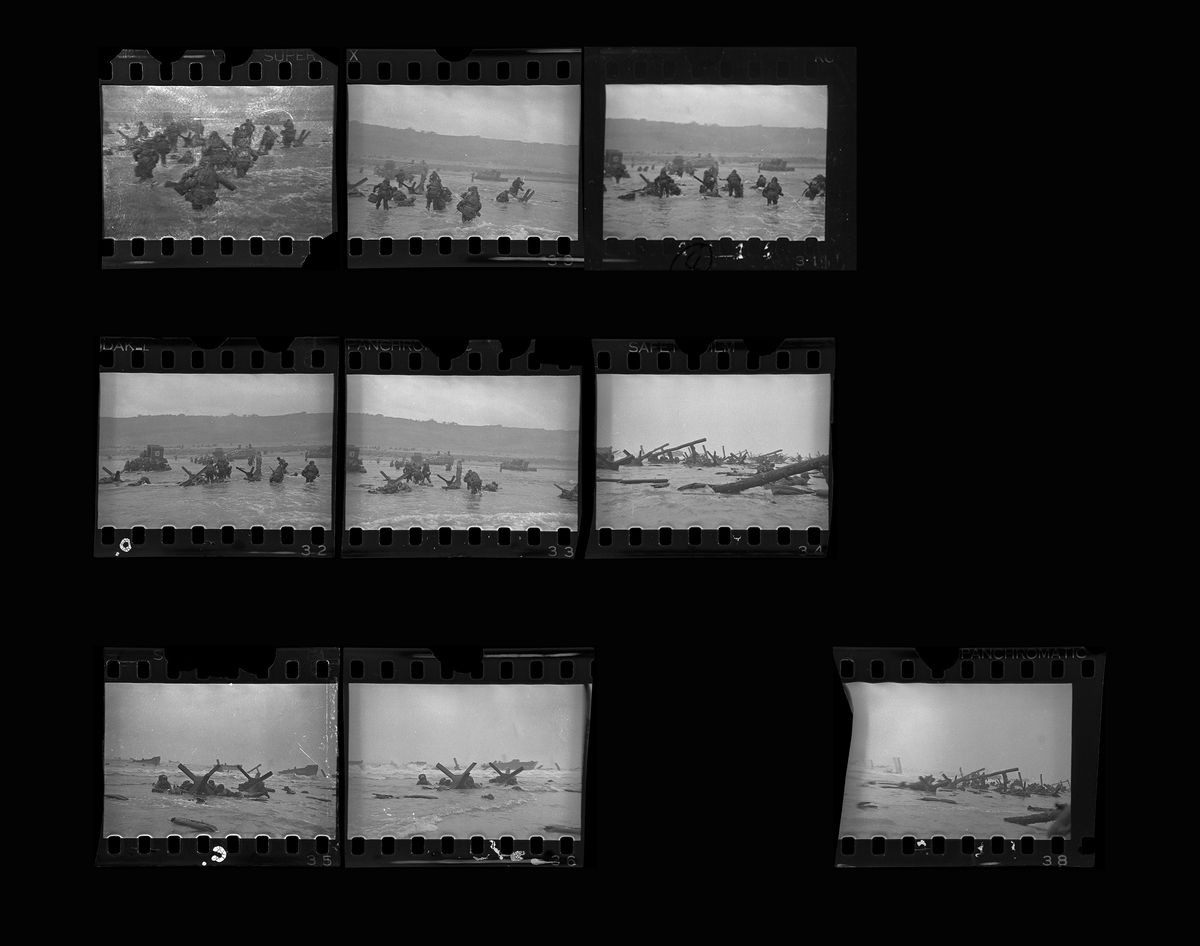
FRANCE. Normandy. Omaha Beach. The first wave of American troops lands at dawn. June 6th, 1944 (screenshot).
In the rest of this article, each photo is referenced by a C (for Capa) followed by the negative number on the contact sheet. We will focus on the first five views (C29 to C33), in which the coast is visible and the soldiers are shown from behind. In the next five views (C34 to C38), which were taken in the direction of the sea, the soldiers are shown from the front or in profile.
The first photo, C29, was taken from the LCVP that carried the group Capa joined. It shows soldiers racing towards the shore.
Recounting his landing in his book Slightly Out of Focus, Capa reports that the men in his boat were wading through waist-deep water. He says he then stopped on the LCVP’s gangplank to take a picture, but the bosun, “who was in an understandable hurry to get the hell out of there,” and mistaking the pause for hesitation, gave him a well-placed kick to make up his mind.[2] Capa was most likely one of the last, if not the very last, to leave the LCVP.
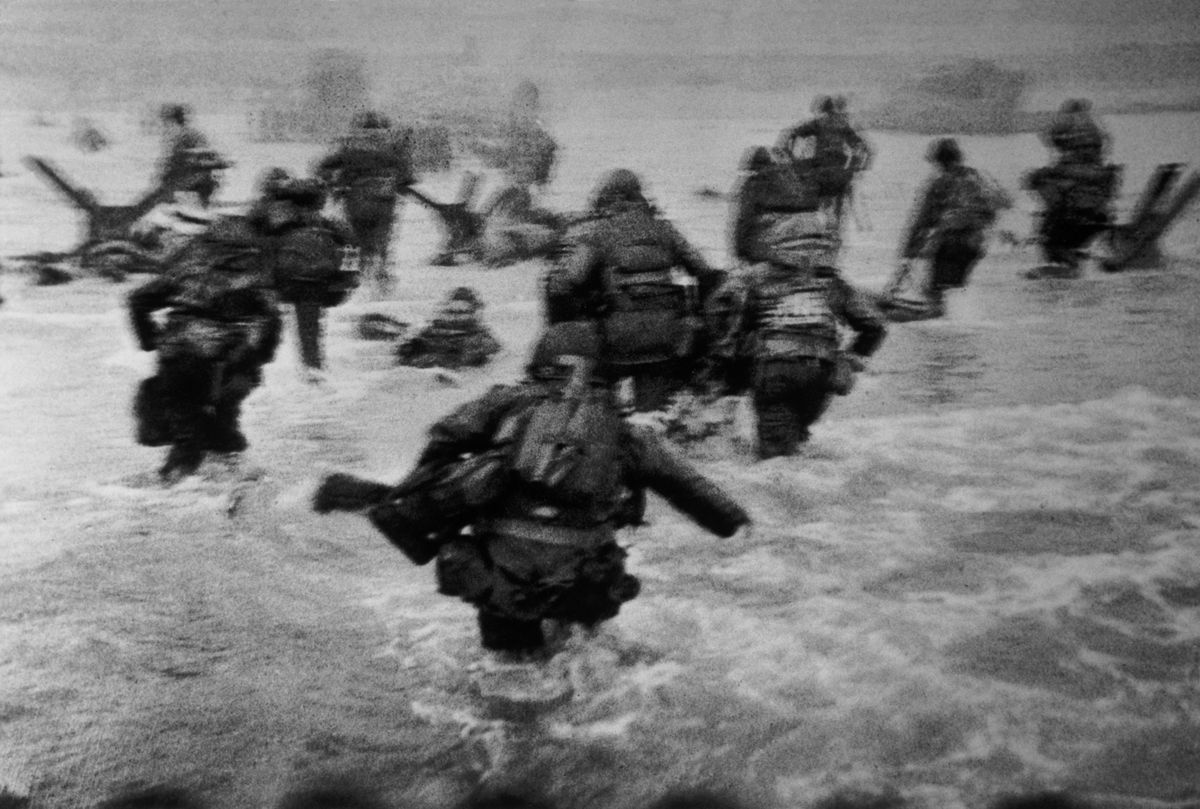
02 – Robert Capa, Omaha Beach, June 6, 1944, photo C29, reference PAR121451 on Magnum Photos website, screenshot. Photo published in Life, June 19, 1944, p. 26.
•
Capa then took the subsequent views, in which he appears to be following some of the soldiers who preceded him.
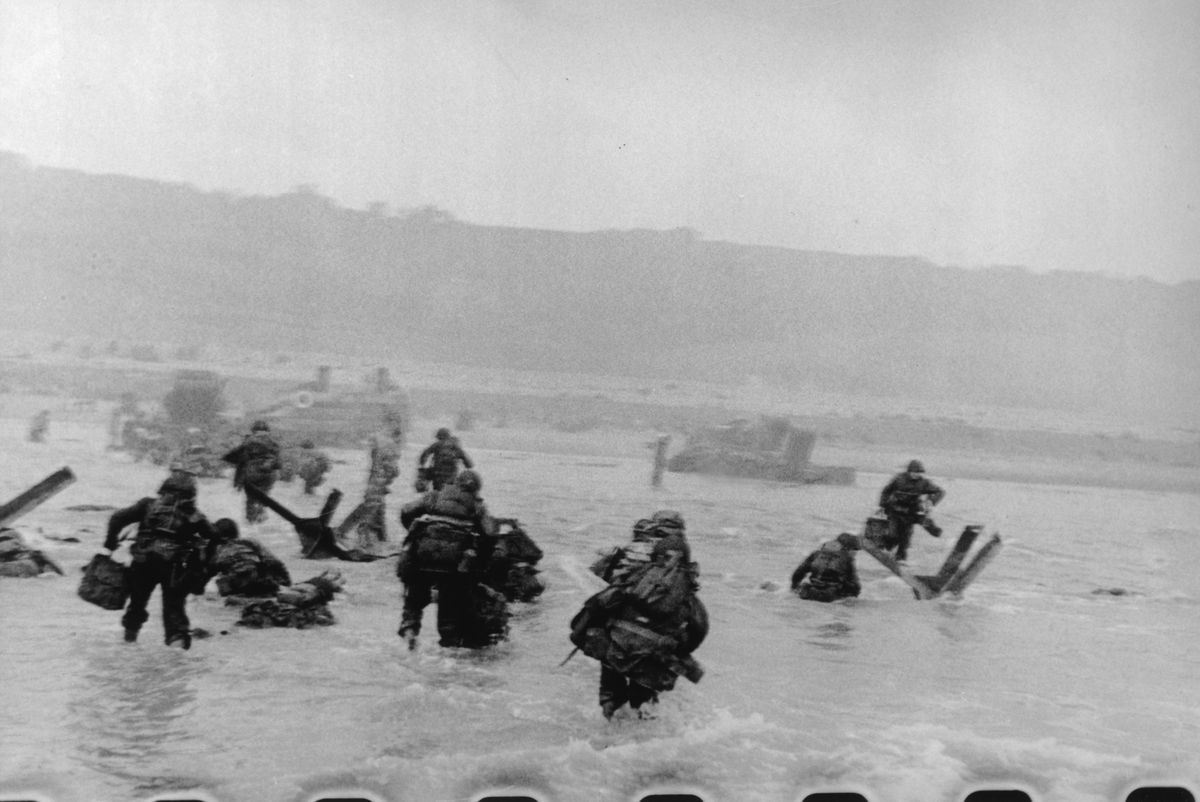
03 – Robert Capa, Omaha Beach, June 6, 1944, photo C30, reference PAR121457 on Magnum Photos, screenshot.
•
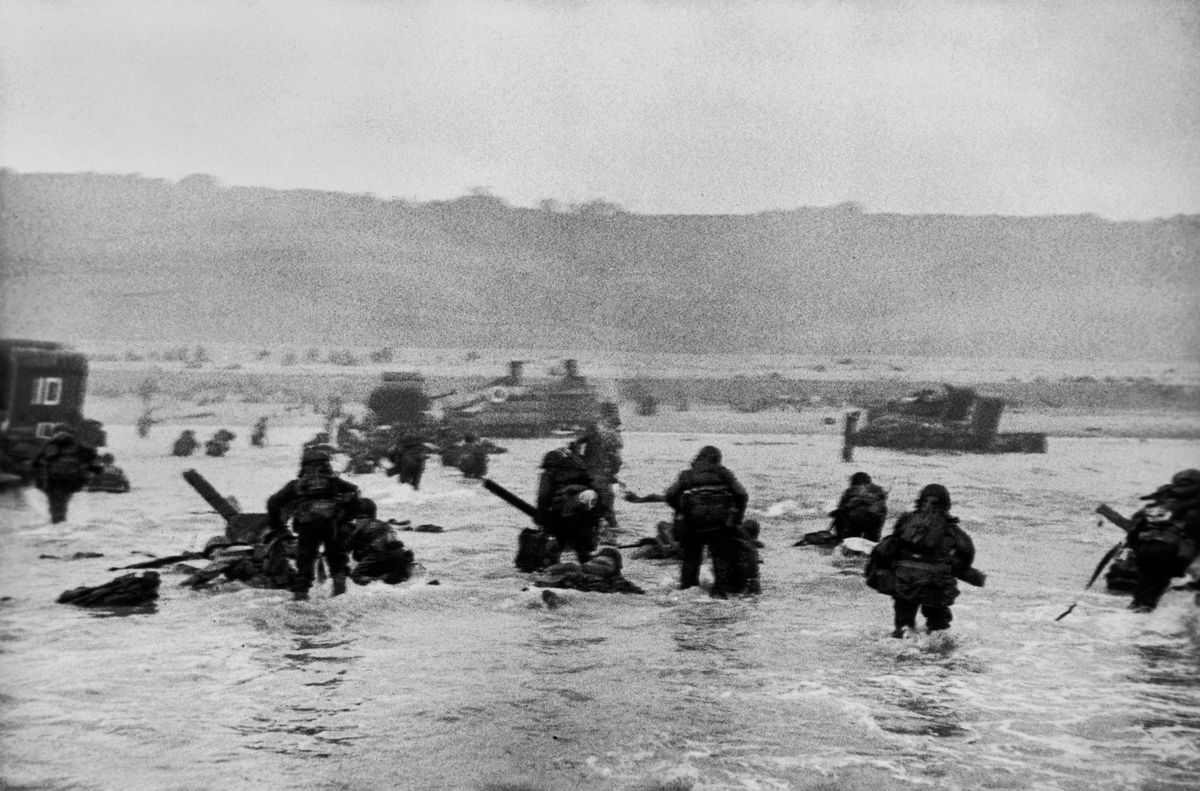
04 – Robert Capa, Omaha Beach, June 6, 1944, photo C31, reference PAR77872 on Magnum Photos website, screenshot.
•
Let’s look more closely at view C32, from the foreground to the shoreline in the background; it is annotated below.
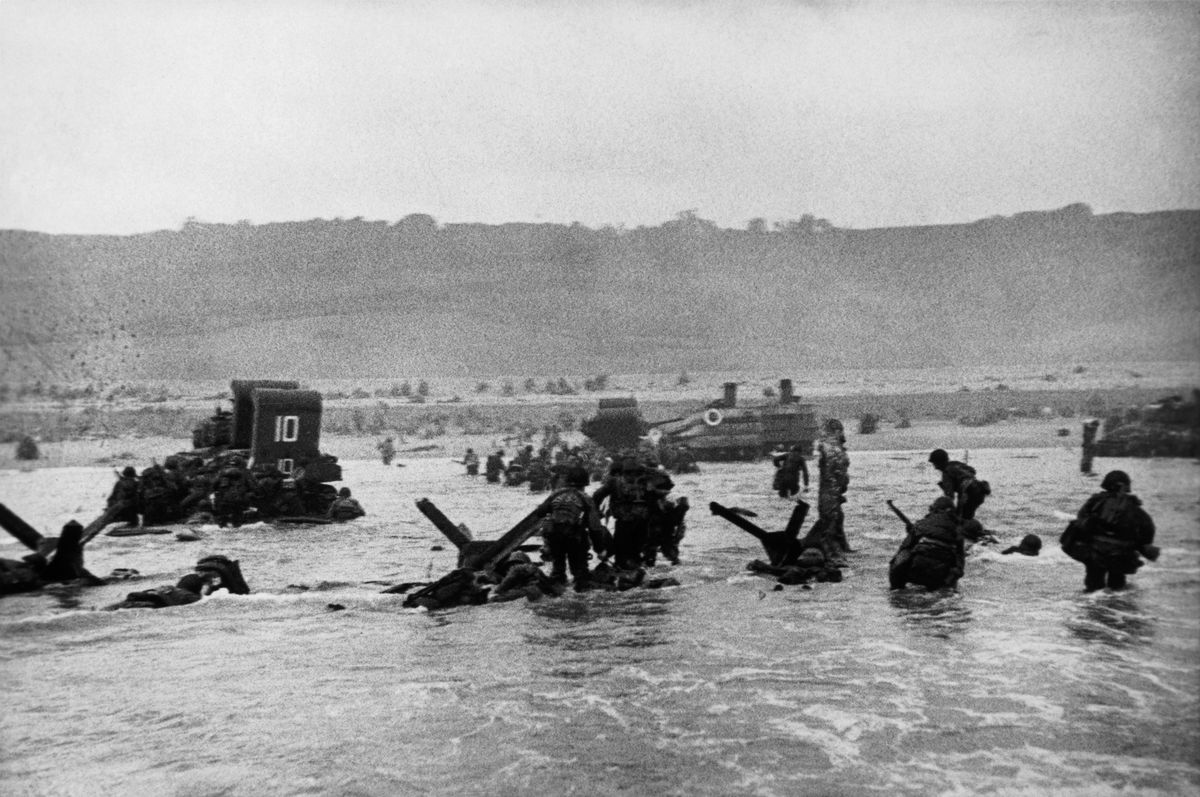
05 – Robert Capa, Omaha Beach, June 6, 1944, photo C32, reference PAR121459 on Magnum Photos, screenshot. Photo published in Life, June 19, 1944, p. 25.
•
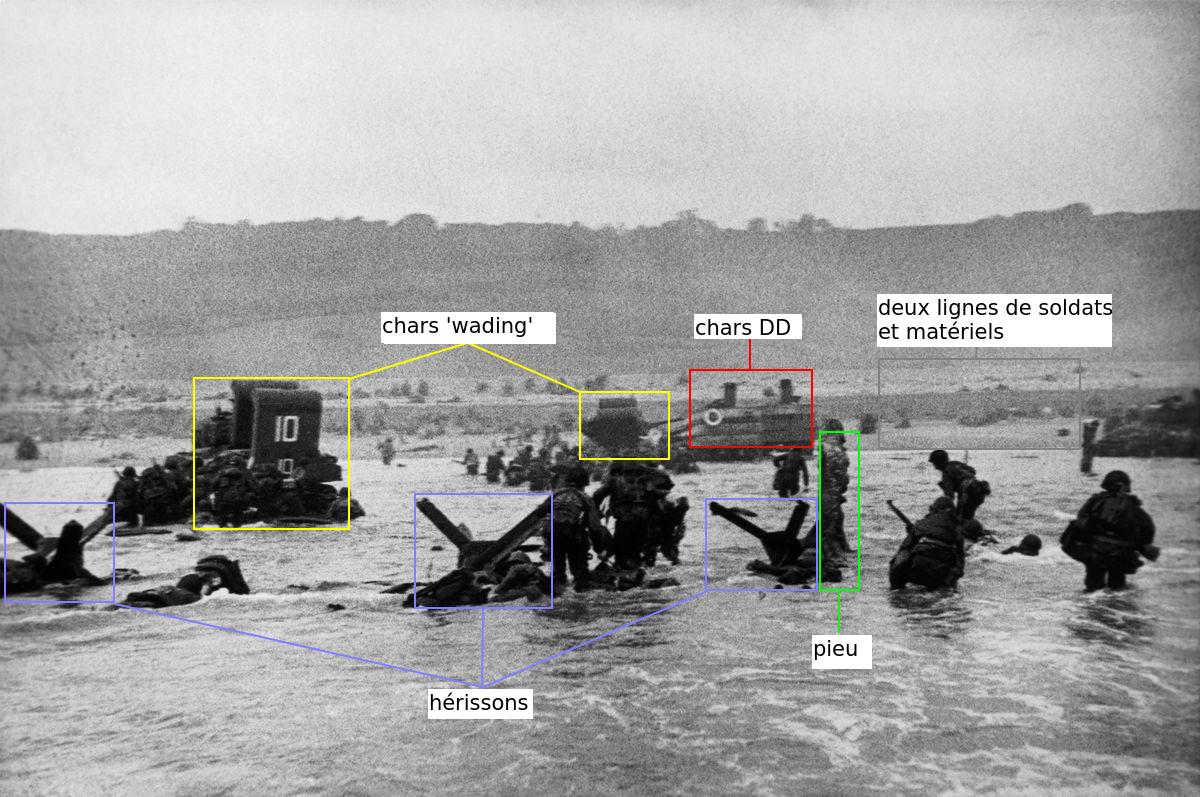
06 – Robert Capa, Omaha Beach, June 6, 1944, photo C32, annotated.
There are several beach obstacles: three Czech hedgehogs with soldiers busy around them in an attempt to blow them up, and a stake very close to the rightmost hedgehog. These obstacles are also partially visible in views C31 and C33.
Further toward the shore, the armored vehicle with a large number 10 is visible in all three views C31 through C33. A group of soldiers is massed behind it, taking cover. This is an American “wading Sherman” tank that accompanied Demolition Gap-Assault Team 10. This type of tank was often equipped with a front blade, like a bulldozer, to clear debris after the team’s sappers had blown up beach obstacles. [Sometimes referred to as “tank dozers.” — A.D.C.] The purpose of these specialized crews was to create safe, marked passages to allow subsequent barges and other vessels to approach the shore at any time of the tide.
This type of tank was not amphibious, but it could proceed partly submerged. It was in fact equipped with a waterproof hull. Two large angled nozzles that had to remain out of the water allowed it to remain operational. This system, sometimes called snorkel, was first developed for submarines. On these tanks, the front nozzle allowed air to enter for the engine and crew, and the rear nozzle evacuated the exhaust gases. The identifying number of the Gap-Assault Team 10 is painted on the rear nozzle.
Still further towards the shore, another “wading Sherman,” with no visible number, is also surrounded by a group of soldiers.
To the right of this one and even closer to the shore, two other distinctive Sherman tanks can be seen. This type of modified DD [Dual Drive] tank was fully amphibious. It was able to float thanks to a waterproof rubber skirt, and had two propellers to move it through the water.[3] On this machine also, a long chimney-shaped nozzle allowed the exhaust of gases. In view C32, the flotation skirts of the two tanks are raised at the rear, and the white circle on the left one is a buoy.[4] Most of the 32 DD tanks at Omaha Beach were dropped off much too far out to sea. They sank, and not all of their crews could be rescued. Only five of them, including the two shown here, made it to shore.
In the background, we can see two lines of soldiers and equipment that arrived earlier. The first line is on the beach, the other on the dunes above it, probably landed in earlier waves. This simple observation demonstrates that Capa did not arrive with the first wave.
Finally, in photo C33, another stake and another “wading Sherman” appear on the right near the shore. This tank is partially visible in C32.
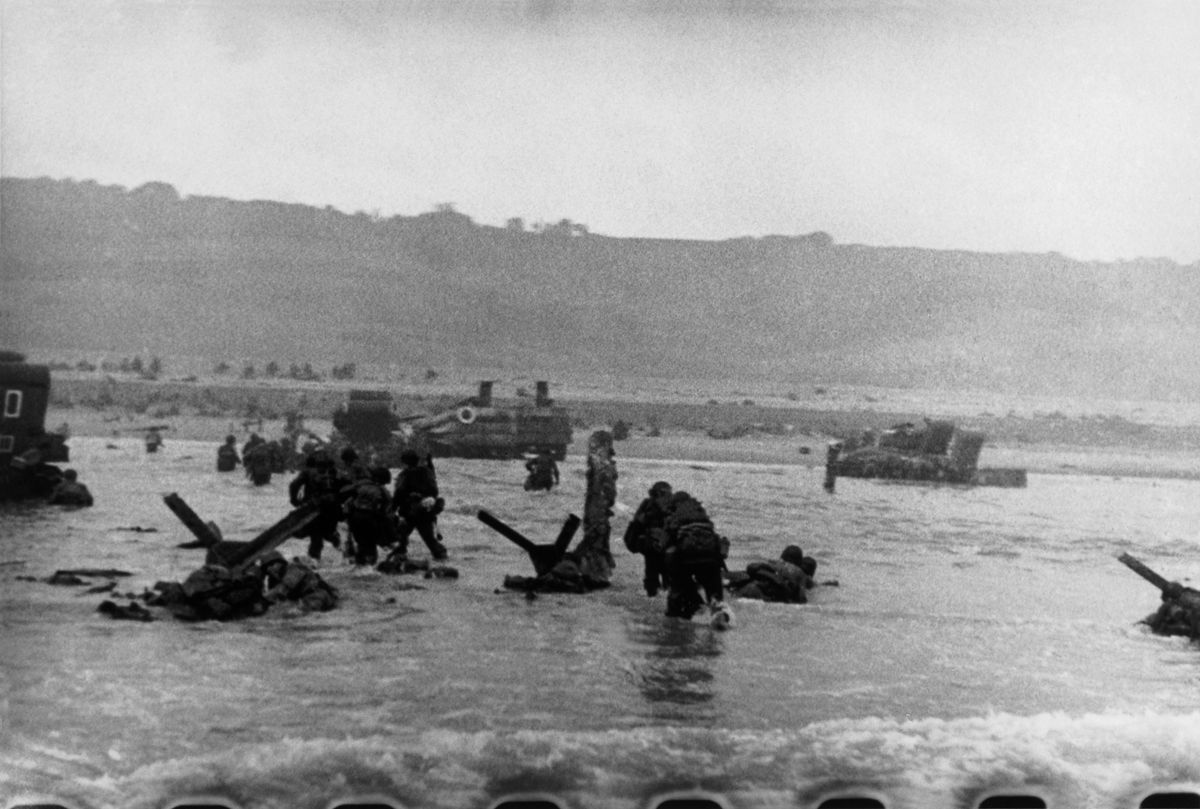
07 – Robert Capa, Omaha Beach, June 6, 1944, photo C33, reference PAR121458 on Magnum Photos website, screenshot.
•
In search of film shot by a U.S. Coast Guard Cinematographer
In 2017, A. D. Coleman and Charles Herrick called attention to some film footage that had been shot by U.S. Coast Guard (USCG) cinematographers during the landing at Omaha Beach.[5]
One of these sequences is particularly interesting. It was initially spotted in the short film Beachhead to Berlin, made in 1945 and widely distributed to highlight the role of the USCG during Operation Overlord [links to the film in footnote; see its IMDB entry here].[6]
This sequence is also used in other montages that we have also found [links in footnote].[7]
We finally managed to identify the USCG film rush in the NARA (National Archives and Records Administration) catalog, under the reference 428-NPC-15707.[8]
All the versions we found are unfortunately of poor quality.
The film opens with an identification slate bearing the name of the USCG cinematographer, Ruley, with whom we are familiar. In 2017, Charles Herrick had identified Robert Capa in several sequences of another film bearing the reference NARA 428-NPC-10782. The footage in this latter film was shot during Operation Overlord by David T. Ruley, who held the rank of second Chief Photographer’s Mate (C. Pho. M.) of the U.S. Coast Guard.[9] In this color film, Capa can be seen aboard LCI(L)-94, holding Ruley’s identification slate while leaving Omaha Beach after taking the photographs we know, and then in an LCVP shuttling between LCI(L)-94 and the USS Samuel Chase.
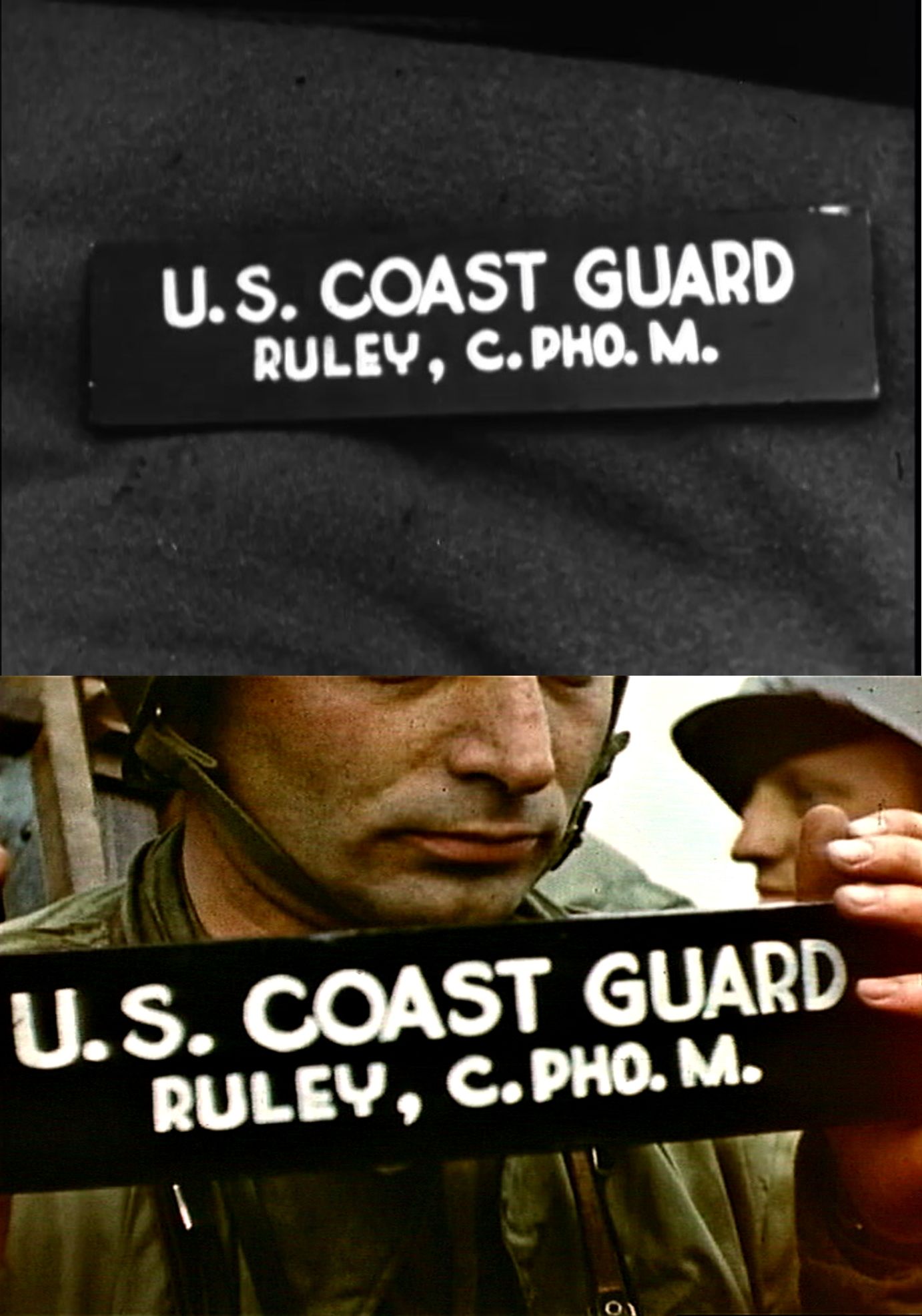
08 – (top) Ruley Slate, film 428-NPC-15707 at timestamp 0:07 / (bottom) Ruley Slate held by Robert Capa, color film 428-NPC-10782 at timestamp 5:15.
•
The sequence filmed by Ruley
Here is the sequence that merits our attention:
09 – David Ruley, sequence from NARA 428-NPC-15707, starting at timestamp 0:46.
In the foreground, on the right of the picture, a column of soldiers prepares to disembark from the deck of an LCI(L). This is obviously LCI(L)-94, to which Ruley was assigned as photographer/cinematographer. The ship is then beached for the first time to disembark its troops and equipment. As will be explained later, this LCI then left the beach and returned to a safer area to complete its beaching. It was this ship that Capa took to re-board the USS Samuel Chase, which would later take him back to England.[10] In the center of the image, a few of the LCI’s crew are shown in the background.
In the center of the image, some soldiers who have just disembarked from the LCI are submerged; they are loaded with equipment and seem to be moving with difficulty in the sea.
On the left side, in the upper background, a group of soldiers disembark from an LCVP and head towards the shore. In their path, we can see beach obstacles similar to those found in Capa’s early photographs: three hedgehogs and a stake seen from the side, located near the rightmost hedgehog (see annotated stills below). Behind these soldiers, a “wading” tank can be seen with a group of soldiers using it for shelter. A large number that not clearly be read appears on the tank, which seems to be immobile during the sequence. In the distance, behind this numbered tank, another tank with some sort of “chimney” is moving forward during the sequence, followed by a group of soldiers taking shelter behind it. It is obviously a DD tank.
At the beginning of the sequence (see stills, above), tanks can be seen near the shore.
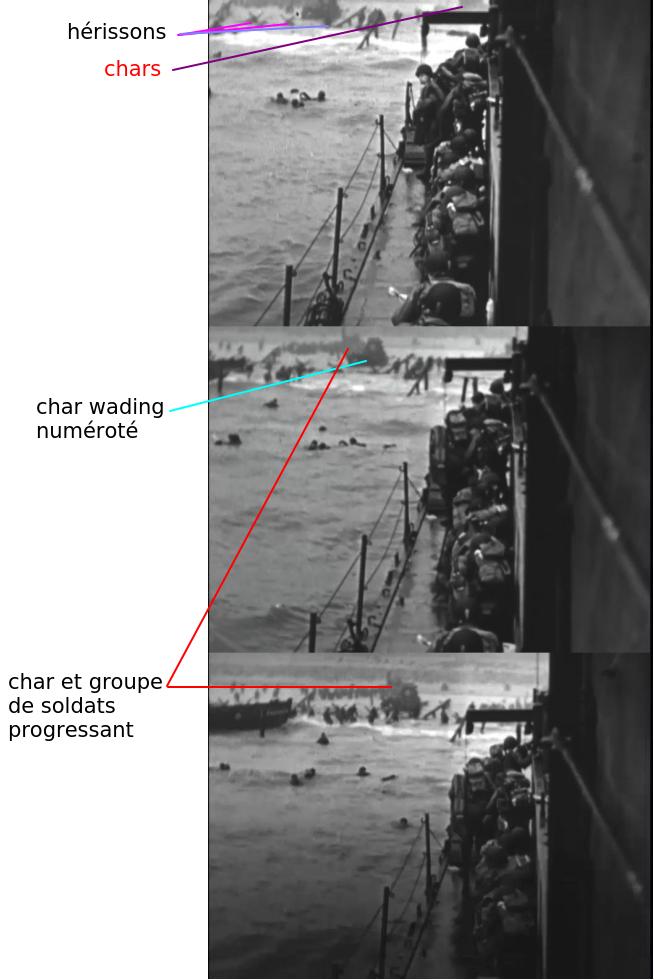
10 – David Ruley, sequence from NARA film 428-NPC-15707, annotated screenshots. From top to bottom, timestamps: 0:00, 0:02, 0:09.
•
The two successive landings of LCI(L)-94
The plan for this landing was that LCI(L)-94 would land as part of wave 11 (T+70, 7:40 am) on the Dog Red sector of Omaha Beach. Upon arrival, Lieutenant Gene R. Gislason, who was in command of the ship, found the conditions at that time in this area unacceptable.
While still offshore, Gislason saw LCI(L)-91, also belonging to Wave 11, run aground on the beach and catch fire. After watching LCI(L)-92 from wave 13 suffer the same fate shortly after running aground at 8:10 a.m., Gislason decided to look for a safer berthing site. He then headed east along the beach. After a trip of about 1-1/4 miles, he spotted a gap in the obstacles, made by Gap-Assault Team 10 on Easy Red. He then managed to ground his LCI there, about 40 to 50 minutes after the scheduled time of arrival for his ship.
With only half of LCI(L)-94‘s troops disembarked, the current pulled the ship into a mined obstacle. Gislason refloated the LCI, which ran aground again about 100 yards to the east. During the maneuver, the vessel struck at least one unmined obstacle, which damaged a propeller and propeller shaft. At this new grounding site, Gislason finished disembarking the troops. As the last of the troops were leaving the ramp, three German shells hit the LCI’s cockpit. Three crew members were killed, and the ship suffered severe electrical damage. [See Charles Herrick’s analysis of recently discovered film by Ruley showing the damage caused by this shelling, published here after Peccatte published this article at his blog. — A.D.C.] Despite this, Gislason managed to move the LCI back off the beach, using manual steering and a single propeller. (He later supervised the repairs, which were completed in four hours, allowing LCI(L)-94 to remain operational in the assault zone for three weeks.)
Most U.S. Coast Guard LCI commanders had little practical, relevant experience before entering the military. Gislason, on the other hand, was in his mid-thirties, and before the war he had been a captain on ships operating on the Great Lakes, on or near the Canadian border in the upper mid-east of the U.S. This experience certainly helped him a lot on D-Day. For his behavior during the landing, he was awarded the Silver Star.[11]
•
Photos taken by Lieutenant Gislason, captain of LCI(L)-94
Gislason was an amateur photographer. In violation of military regulations, he used his personal camera to take some photos of his ship’s two groundings during the landing. Copies of these photos were given to Charles Jarreau, a young member of the LCI(L)-94 crew. In 1992, Jarreau’s wife donated the photos to the National WWII Museum in New Orleans. As a result, these photographs are often credited to Jarreau, although Jarreau stated in an interview with historian Stephen Ambrose that Gislason took them.[12]
![11 - LCI(L)-94, Omaha Beach, Normandy, June 6, 1944. Two photographs taken by Lt. Gene R. Gislason, attributed to Charles Jarreau. The National WWII Museum, New Orleans. The landing site is mistakenly marked "Dog Red," the area originally intended for the LCI to land. Source: nationalww2museum.org [1], see also [2] and [3].](https://www.nearbycafe.com/artandphoto/photocritic/wp-content/uploads/2022/01/11-Gislason.jpg)
11 – LCI(L)-94, Omaha Beach, Normandy, June 6, 1944. Two photographs taken by Lt. Gene R. Gislason, attributed to Charles Jarreau. The National WWII Museum, New Orleans. The landing site is mistakenly marked “Dog Red,” the area originally intended for the LCI to land. Source: nationalww2museum.org [1], see also [2] and [3].
•
Notes:
[1] See, for example, the sections “Preparation for the Assault” and “Maps of Omaha Beach” on Yves Cordelle’s omaha-vierville.com website.
[2] Robert Capa, Juste un peu flou : Slightly out of focus [1947], with Richard Whelan (preface), Cornell Capa (preface), translated from English by Catherine Chaine, Paris : Delpire, 2003, p. 167.
[3] See the photos and the article “Amphibious Sherman tanks on the Vierville beach,” on the omaha-vierville.com website.
[4] On the “chimney” and the buoy of DD tanks, see the articles “Duplex Drive Tanks” by Pieter Jutte, [1] [2] [3]. To better understand the appearance of these two types of tanks, “wading” and DD, see the first picture of the second article.
[5] See especially: The Parallax View (#33) by A. D. Coleman, April 30, 2017; Guest Post 24: Charles Herrick on Capa’s D-Day (e), May 14, 2017; Guest Post 27: Charles Herrick on Capa’s D-Day (i), May 20, 2019.
[6]Beachhead to Berlin – Documentary of 1945, starting at timestamp 13:57; Beachhead to Berlin, alternate version, starting at timestamp 14:34; Beachhead to Berlin, abridged, starting at timestamp 3:59; Beachhead to Berlin, abridged, starting at timestamp 3:55; Beachhead to Berlin, colorized and abridged, starting at timestamp 3:59.
[7] Normandy Archival, starting at timestamp 9:04, and Classic Omaha Footage, starting at timestamp 0:23, two videos at the site of the National WW2 Museum in New Orleans; At the Beaches of Normandy (In Colour) June, 1944, starting at timestamp 12:57; D-Day in Colour, abridged sequence starting at timestamp 34:56; D-Day Movie Fixed Credits, starting at timestamp 4:57; Critical Past, Landing craft loaded with soldiers and equipment establish beachhead in Normandy during D-Day invasion, starting at timestamp 3:59.
[8] See also: US Coast Guard Omaha Beach D-Day June 6 1944, by OTD Canadian Military History, starting at timestamp 0:48.
[9] See Guest Post 24: Charles Herrick on Capa’s D-Day (e), May 14, 2017, and Guest Post 24: Charles Herrick on Capa’s D-Day (f), May 17, 2017.
[10] See the article by Herrick cited above.
[11] Sources for this summary: Stephen E. Ambrose, D-Day, June 6, 1944: The Climactic Battle of World War II (New York: Simon & Schuster, 1994), pp. 225 and 234; United States Coast Guard at Normandy, WW2Talk.com; articles by Charles Herrick, especially: Guest Post 24: Charles Herrick on Capa’s D-Day (e), May, 14, 2017; Guest Post 27: Charles Herrick on Capa’s D-Day (h), May 17, 2019; Guest Post 28: Charles Herrick on Capa’s D-Day (j), June, 6, 2019.
[12] See Guest Post 27: Charles Herrick on Capa’s D-Day (h), May 17, 2019.
•
Patrick Peccatte is a former mathematics professor, computer engineer, and specialist in digital image databases. He was a research associate at the Laboratoire d’histoire visuelle contemporaine (Lhivic/EHESS). With Michel Le Querrec, he created and developed the PhotosNormandie project. He is currently an independent researcher and his research notebook Déjà Vu on visual studies is hosted on the academic platform Hypothèses.
His current research focuses on methodologies for the analysis of weakly structured iconographic sets, in particular images in popular culture.
•
PhotosNormandie is a French collaborative project that aims to improve the captions of more than 5100 photos and 300 historical films of the Normandy landings and battle. Active on the Flickr sharing platform since January 2007, it is one of the oldest crowdsourcing projects on images in the world. The PhotosNormandie team is made up of passionate amateurs and has also been interested in Robert Capa’s photos of the Battle of Normandy several times, although they do not belong to the project’s corpus (see the Robert Capa tag).
The photos of the project on Flickr:
https://www.flickr.com/photos/photosnormandie
The films of the project on YouTube:
https://www.youtube.com/user/PhotosNormandie/videos
The FAQ of the project, in French:
https://dejavu.hypotheses.org/2998
•
Philippe Villéger is a contributor to the PhotosNormandie project. It is within the framework of the project that he formulated the hypothesis discussed in this article. He works in a company that manufactures small series of mechanical parts, mainly for the aeronautical industry.






Leave a Comment